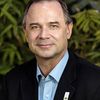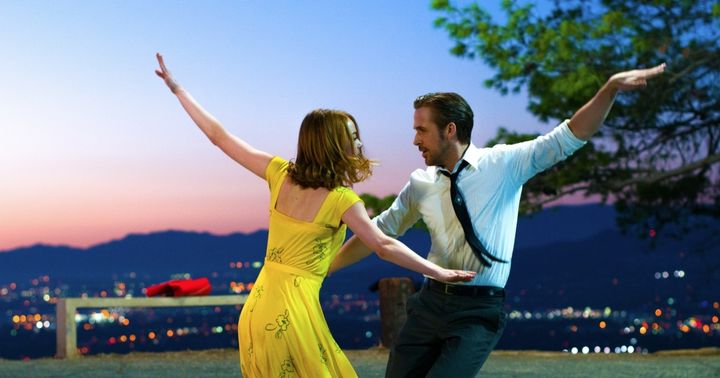
Ryan Gosling and Emma Stone share a dance in Griffith Park in La La Land
In “La La Land,” star-crossed lovers played by Ryan Gosling and Emma Stone, watch “Rebel Without a Cause” and the scene shown from the 1951 James Dean movie is set in Los Angeles’ Griffith Park. Later, they end up at the Griffith Park Observatory, for a dreamy sequence where they literally dance among the stars.
“La La Land” celebrates the Hollywood musical, but it also relies on many Hollywood movie tropes, including using Griffith Park as a significant location. In fact, Griffith Park has been the back lot for more movies than perhaps any other city park except Central Park in New York.
City parks and our national parks and public lands, have played an indispensable supporting role in hundreds of movies, dating back to Hollywood’s earliest days. As we get ready to watch the Academy Awards, it’s worth saluting these often-unheralded co-stars, the places we all use daily for recreation, fitness, and overall happiness, and which do double duty as earthly—and sometimes extra-planetary—settings for the movies.
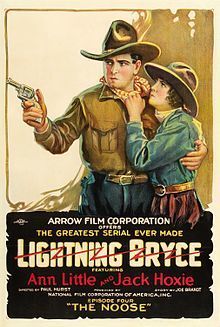
Bronson Canyon provided the scenery for the 1919 serial Western Lighting Bryce
Consider Griffith Park. The 4,310-acre city park in the hills above Hollywood was a natural –in every sense--setting for Hollywood from its infancy. Some of the earliest moving pictures were shot in Griffith Park. Its dry, dusty and mostly treeless landscape defined the cowboy genre for several decades, perhaps starting almost 100 years ago with “Lightening Bryce,” an early silent Western serial. It was also the set of Civil war battle sequences in D.W. Griffith’s 1915 epic “Birth of a Nation.” In 2014, there were 322 “production days” of movies shoots in the park—almost one a day!
Besides Westerns, the park, and especially the caves and cliffs of Bronson Canyon, have been the sets of countless movies and television shows, from low-budget sci-fi, like the original 1958 version of “Invasion of the Body Snatchers” and “Teenagers from Outer Space,” to bigger budget “Star Trek” TV and movie shoots, to crime movies and new films such as “The Rocketeer,” “The End of Violence,” “The Terminator,” and “Back to the Future.” Bronson Canyon’s former quarry mine entrance was the entrance to the Batcave in both the 1960s TV series and the 1966 feature film “Batman: The Movie.” It was also the setting of the climactic scene of John Wayne’s “The Searchers,” the 1956 classic in which Wayne first threatens, and then rescues, a young Natalie Wood.
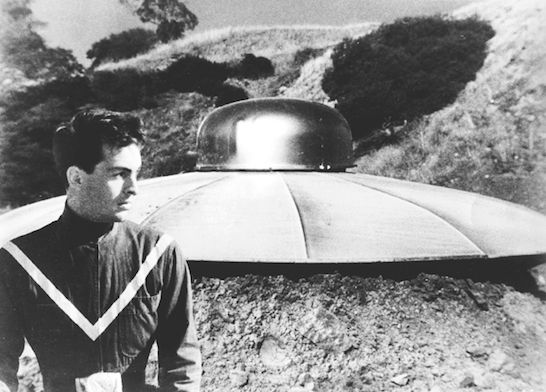
An alien spaceship lands in Bronson Canyon in the 1959 cult classic Teenagers from Outer Space
Just a year earlier, Natalie Wood, Sal Mineo, and James Dean were in Griffith Park for scenes for “Rebel Without a Cause,” the prototypical disconnected teen movie. One famous scene included a switchblade fight between Dean and the leader of a gang of delinquents, who are visiting the Griffith Park Observatory as part of a high school class field trip. The beautiful Art Deco Observatory is the backdrop for dozens of films aside from “La La Land,” including doubling as the visitor center in the original “Jurassic Park.”
While Griffith Park may be California’s busiest city park film site, New York City’s Central Park may challenge it as a popular movie location. At least 350 movies had scenes shot in Central Park, along with hundreds more TV shows were shot among its 843 acres. Beginning in 1908, with the Vitagraph studio’s “Romeo and Juliet,” the park has been featured in some of the greatest movies in cinematic history, including scores of Oscar-nominated films.
For example, Central Park scenes from last year’s movies included Woody Allen’s “Café Society,” the thriller “Girl on the Train,” and “The Only Living Boy in New York.” Earlier, the park was a setting in Oscar winners “Annie Hall,” and “Kramer vs. Kramer,” and other classics like “Breakfast at Tiffany’s,” “When Harry Met Sally,” and “Ghostbusters.” Central Park is the setting from every film genre, from thrillers such as the original 1962 version of “Manchurian Candidate” and “Marathon Man” to crime (“Cruising”) to dramas such as “The Devil Wears Prada,” and romantic comedies like “Friends with Benefits,” “Hannah and her Sisters,” “Kate & Leopold,” and action/adventure, including “Spiderman.” And of course there are semi-animated children’s features such as “Stuart Little” and “Muppets Take Manhattan,” where Ms. Piggy is mugged and chases down her mugger. Central Park is so busy as a shooting location, that the Central Park Conservancy – the non-profit that runs the park – has a full-time department devoted to assisting film production, but more important, to make sure companies leave nothing but footprints in the historic landmark.
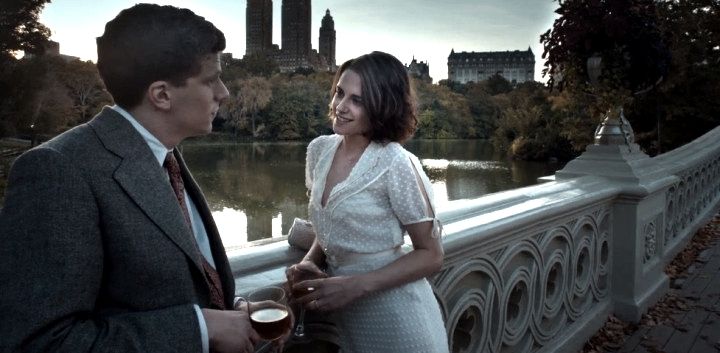
Jesse Eisenberg and Kristen Stewart find a romantic moment in the Romantic landscape of Central Park in Cafe Society
Numerous Oscar-winning films were shot in national parks. A favorite location has been Death Valley National Park, where more than 100 movies and TV shows were filmed, including “Spartacus” (1960) and the Oscar-nominated “The Greatest Story Ever Told.” Other natural areas in National Parks and other federal public lands were used for scenes in “The Revenant,” “Wild,” “127 Hours,” “All the President’s Men,” and “The Last of the Mohicans.”
And in San Francisco, Golden Gate National Recreation Area was used in “Vertigo,” “Mrs. Doubtfire,” “The Presidio,” “Birdman of Alcatraz,” and “Escape from Alcatraz among many films.
Aside from La La Land, other 2017 Oscar-nominated films using parks includes “Captain Fantastic,” whose opening scenes were shot in Deception Pass State Park in Washington, and “Nocturnal Animals,” shot in Mojave Desert National Preserve, doubling for Texas. Interestingly, the film’s director had to carefully exclude shots showing Joshua trees, which are in the park but not found in Texas. And the Coen brothers’ “Hail Caesar” included scenes shot in California’s Pelican Cove Park and the Vasquez Rocks Natural Area.

Viggo Mortenson and his children meditate in North Cascades National Park in Captain Fantastic
So, as the new presidential administration and Congress determines park policy and funding—including money which passed along to states and cities—they should be mindful to take only the best care of our national, state, and city park treasures—those often-unnamed co-stars, frequently buried at the very end of the credits.
Research credit on movies filmed in parks and relevant clips was done by Kate Donatelli and John Ceglarek.
